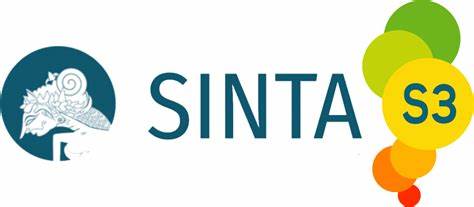A CORRELATION ANALYSIS OF STUDENTS’ LANGUAGE LEARNING STRATEGIES USE AND THEIR ACADEMIC PERFORMANCE
DOI:
https://doi.org/10.22460/eltin.v1i1.p%25pAbstract
The way people learn a foreign language may be different from one person to
another. The success of students’ learning may be affected by the strategies
which are employed by them. Therefore, attracted by the problem, this paper is
aimed to investigate Language Learning Strategies (LLS) employed by the
students and its relationship with their academic performance. Strategy
Inventory of Language Learning Strategies from Oxford (1990) was adopted as
the main theory of the study. The subjects of the research were 30 second year
students of English Department of UNTIRTA (Universitas Sultan Ageng
Tirtayasa) Serang, Banten Province. To collect the data of students’ LLS,
Questionnaire of Strategy Inventory of Language Learning, (Oxford, 1990) was
adopted. Moreover, students’ academic performance was measured from their
Grade Point of Average (GPA).The study finds that, there is relationship
between students’ language learning strategies use and their academic
performance. It is shown by the value of r, which is 0,776, while the critical
value with df of 28 is 0.32 It means that the correlation is marked and
significant. Thus, it suggess that the more a student employs language learning
strategies the better her/his academic performance is.
KEYWORDS: LLS (Language Learning Strategies), SILL (Strategy Inventory of
Language Learning)
References
Abhakorn, J. 2008. The Implication of learner strategies for Second or Foreign Language Teaching. ARECLS. Volume 5, 186-204
Bogdan, C.R. 1992. Qualitative Research for Education. Nedham Height. Allan and Bacon
Brown, Douglas, H. 2001. Teaching by Principle: an Interactive Approach to Language Pedagogy to Language Pedagogy. New York. Longman. Inc.
Burns, Robert B. 1995. Research Methods. Melbourne: Longman.
Chen & Hung. 2012. Personality Type, Perceptual Style Preferences, and Strategies for Learning English as a Foreign Language. {on line: at http://dx. doi.org/10.2224/sbp. accessed: 10 Nov 201
Cohen, Andrew, D. 1996. Second Language Learning and Use Strategies: Clarifying the Issuess. Minepolish. {on line: at http://www.carla.org. Accessed: 10 Nov 2012}
Ellis, Rod. 1998. Understnding Second Language Acquisition. Oxford. Oxford University Press.
Griffiths.Carol. 2008. Lesson from Good Language Learners. New York. Cambridge University Press.
Hatch, Farady dan Anne Lazaraton. 1991. The Research Manual: Design and Statistics for Applied Linguistics.
Jie. L & Xiaoqing. 2006. Language Learning Styles and Learning Strategies of Tertiary Level English Learners in China. Vol 37 (1) 67- 90. SAGE.
Lan, L. 2005. Language Learning Strategies Profiles of EFL Elementary School Students in Taiwan. Diss. Faculty of the Graduate School of the University of Maryland, College Park.
Lessard, Michael. 1997. Language Learning Strategies: an Overview for L2 Learners. Nishinomiya. {on line: at kgupyr.kwansei.ac.jp. Accessed: at 10 Nov 2012}
Murray, B. 2010. Studnets Language Learnig Strategy Use and Achievement in the Korean as a Foreign Language Classroom. Foreign Language Annals. Wiley-Blackwell.
Ou-chun. 2011. Influence of English Proficieny on Postgraduate Students Use of Language Learning Stragegies. Sino-US English Teaching. Vol 8 (12). 766-772.
Rebecca, Oxford. 1990. Language Learning Strategies. USA. Heinle & Heinle Publishers.
Fazeli, S. 2012. The Relationship between the Agreeablenes Trait and Use of the English Language Learning Strategies. The Journal of Language and Linguisis Studies. Vol 8 (1). 175-191
Wenden, A. 1990. Helping language learners think about Learning' in Currents of change in English Language Teaching ed. by Rossner and Bolitho OUP p174.
Wu,M. Leaners’ Beliefs and the Use of Metacognitive Language-Learning Strategies of Chinese-speaking ESL Learners. Asian EFL Jounal. 308-336.





